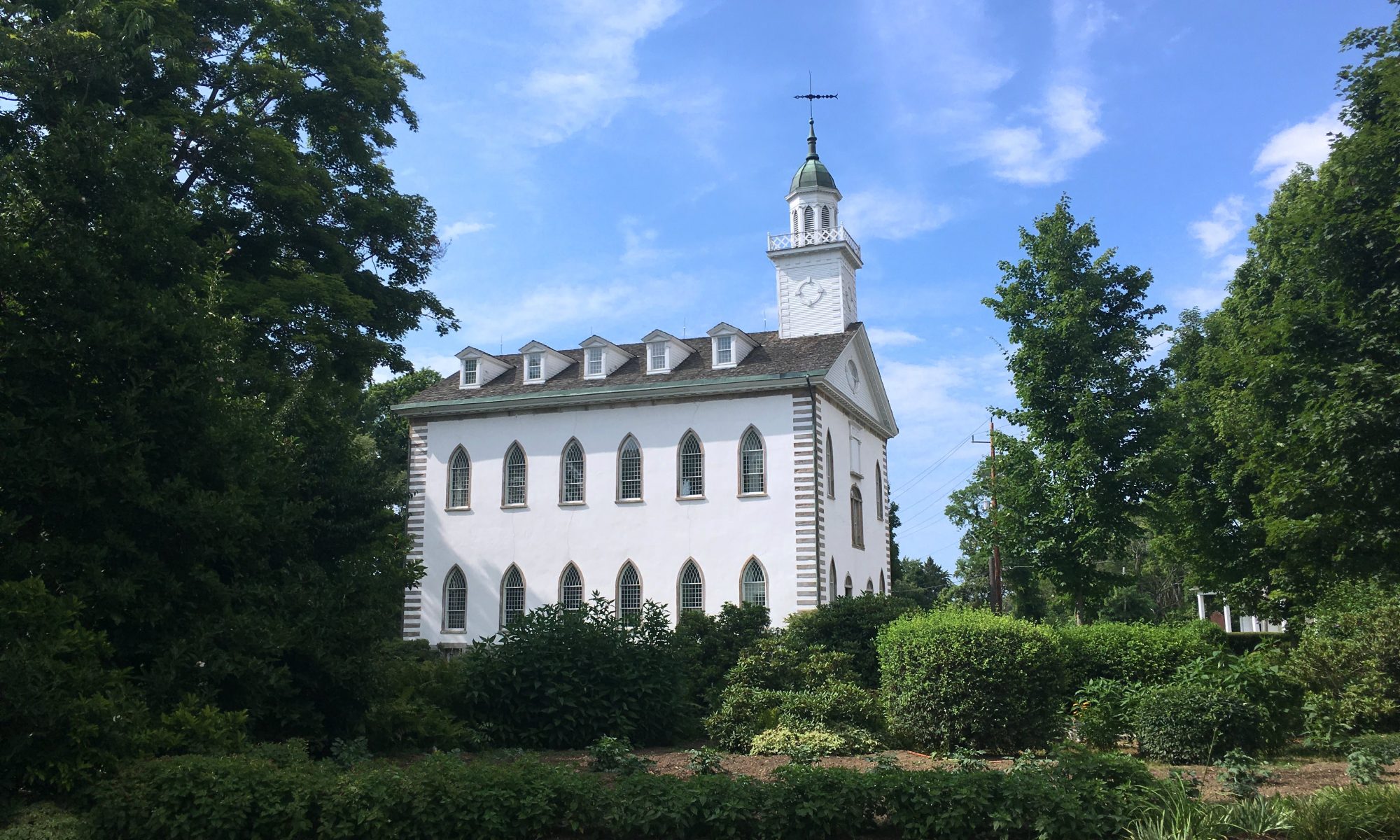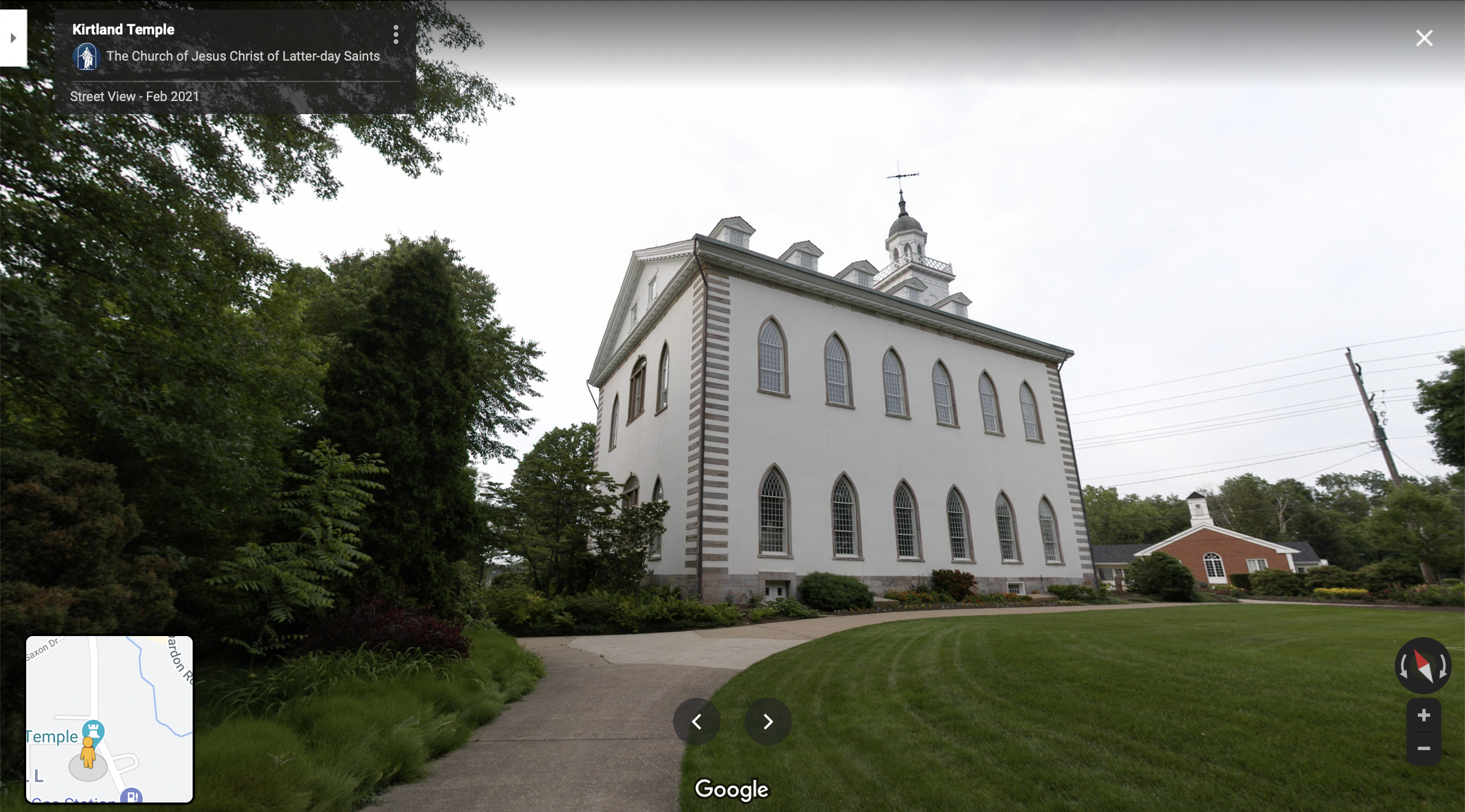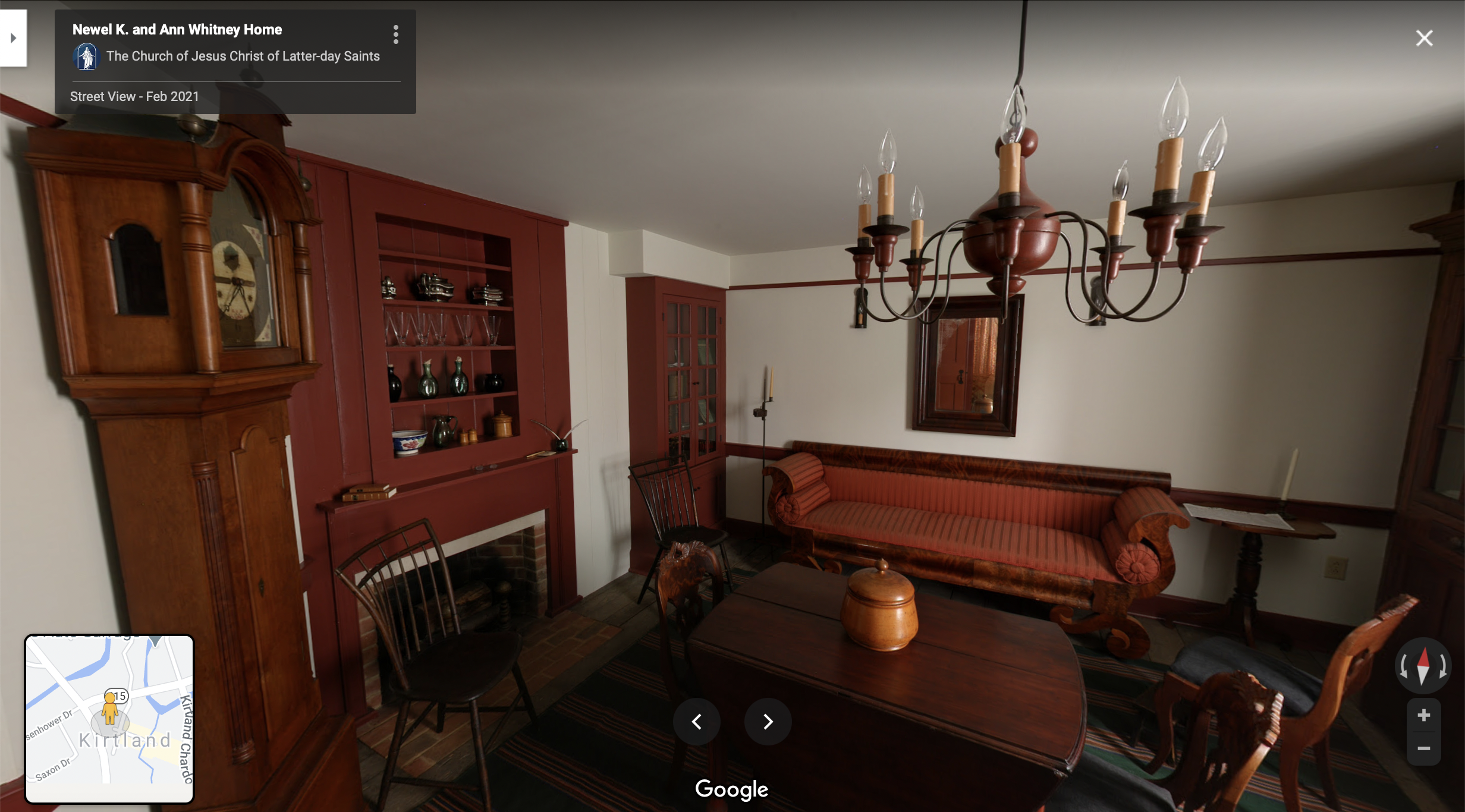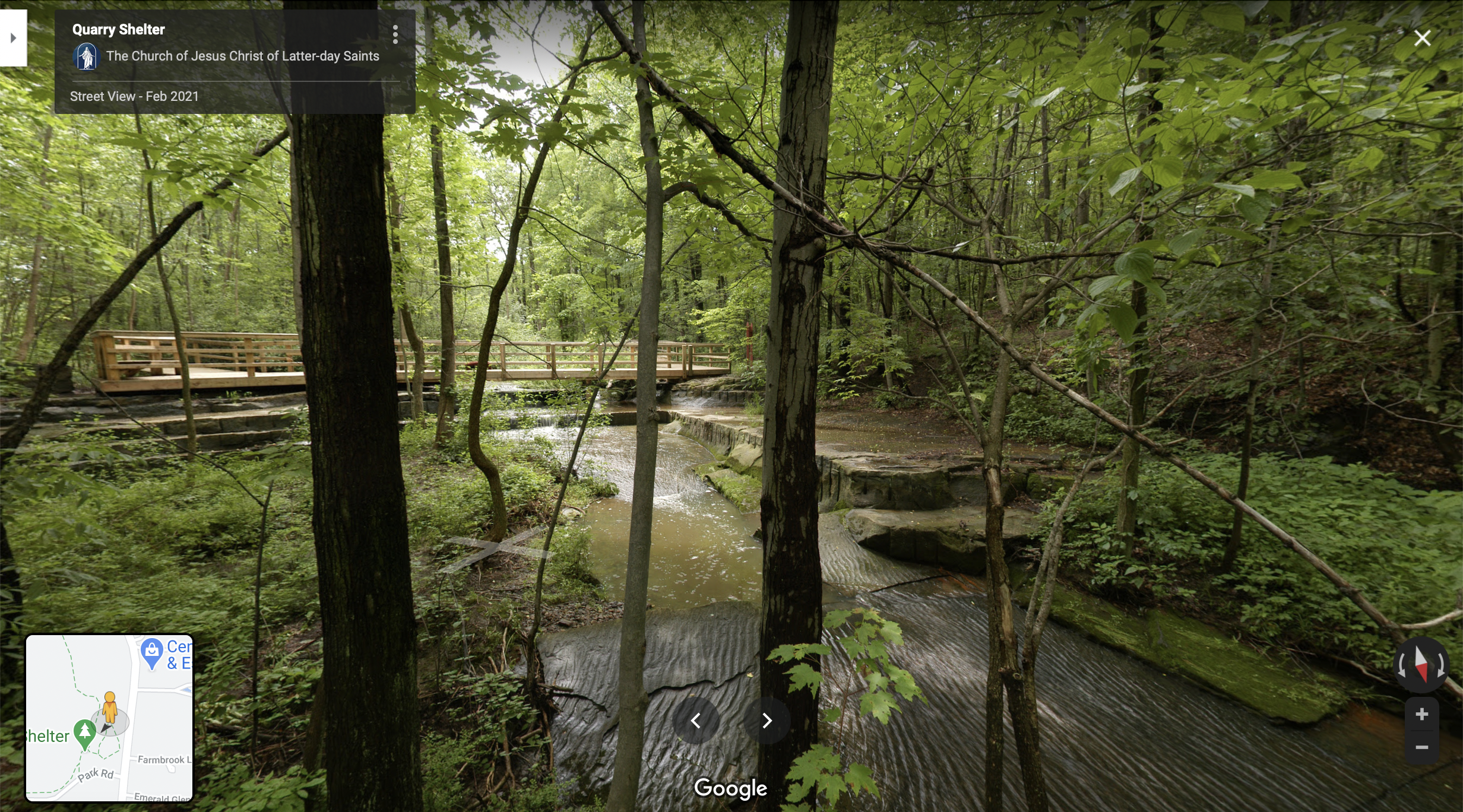/ Places of the D&C / Kirtland, Ohio
Kirtland, Ohio
1831-1837
Photo Credit: Benjy Grover, 2018
Significant Events At a Glance
- First Temple Built Under Priesthood Authority in This Dispensation
- Jesus Christ, Moses, Elias and Elijah Appeared in the Kirtland Temple
- First Presidency and Quorum of the Twelve Established
- First Stake Organized
- School of the Prophets Created
- First Edition of Doctrine and Covenants Published
- Joseph Smith Completed Inspired Translation of the Bible
- Egyptian Papyri Purchased, Book of Abraham Translation Begun
D&C Sections Received Here
(Click for Section Study Helps)
D&C Sections Received Here
(Click for Section Study Helps)
Kirtland Temple
Key Points of Interest
- The Kirtland Temple is the first temple built under priesthood authority in this dispensation
- The saints made significant sacrifices of resources, labor, and time to build the temple
- Close to 1,000 people attended the dedication of the temple 27 March 1836, and many reported seeing angels, speaking in tongues, and other heavenly manifestations
- Jesus Christ appeared to Joseph Smith, Jr. and Oliver Cowdery in the temple 3 April 1836. Moses, Elias, and Elijah also appeared that day to restore priesthood keys
- Unlike later temples, the Kirtland Temple was a multi-use building: It served as a church, community gathering place, and school
- Some washings and anointings were performed in the temple, but the temple endowment had not yet been revealed and was not administered in the Kirtland Temple
- The Kirtland Temple is owned by Community of Christ
(Hover over photo for more information, click to enlarge)
(Tap photo to enlarge and see more information)
Kirtland Temple
Photo Credit: Benjy Grover, 2018
Kirtland Temple
Photo Credit: Gabe Davis, 2019
Kirtland Temple Belltower
Photo Credit: John W. Welch, 2003
Kirtland Temple Window Close-up
Photo Credit: John W. Welch, 2006
Kirtland Temple Front Door
Photo Credit: John W. Welch, 2006
Kirtland Temple Interior Window
Photo Credit: John W. Welch, 2006
Kirtland Temple Lower Court West
Photo Credit: John W. Welch, 2006
Kirtland Temple Lower Court West Pulpits
John W. Welch, 2006
Kirtland Temple Aaronic Priesthood Pulpit Detail
Photo Credit: John W. Welch, 2006
Kirtland Temple Stairs
Photo Credit: John W. Welch, 2006
Kirtland Temple Window Wood Design
Photo Credit: John W. Welch, 2006
Kirtland Temple Rafters
Photo Credit: John W. Welch, 2006
Kirtland Temple Pews and Windows
Photo Credit: John W. Welch, 2006
Kirtland Temple Curtain System
Photo Credit: John W. Welch, 2006
Kirtland Temple Pews and Pulpits
Photo Credit: John W. Welch, 2006
Kirtland Temple Upper Hall East Pulpits
Photo Credit: John W. Welch, 2006
Kirtland Temple Upper Hall West Pulpits
Photo Credit: John W. Welch, 2006
Oval Window in Kirtland Temple Gable
Photo Credit: John W. Welch, 2006
Kirtland Temple Third Floor Plan
Kirtland Temple Third Floor Doors
Photo Credit: John W. Welch, 2006
Kirtland Temple Third Floor Classroom
Photo Credit: John W. Welch, 2006
Temple Third Floor Desk Chair
Photo Credit: John W. Welch, 2006
Kirtland Temple Joseph's Office
Photo Credit: John W. Welch, 2006
Newel K. Whitney Store
Key Points of Interest
- Newel K. Whitney opened the first store in Kirtland by 1822
- The main room of the store served as a storefront, post office and social gathering place
- Part of the store functioned as a bishop's storehouse, where Whitney, the second bishop of the church, could store food and supplies to give to the needy
- Before the temple was completed, the school of the prophets met in a room in the Whitney store and saw Heavenly Father and Jesus Christ there during one of their meetings
- Joseph and Emma Smith lived in the store for about 18 months from 1832 to 1834, and it served as the headquarters of the church during that time
- More words of the Doctrine and Covenants were revealed at the Whitney store than were revealed in any other location in church history
- Joseph Smith III was born in the store, in the Smiths’ bedroom, 6 November 1832
- The Church acquired the store in the 1980s and restored it to its original condition in 1984
(Hover over photo for more information, click to enlarge)
(Tap photo to enlarge and see more information)
Newel K. Whitney Store
Photo Credit: Kenneth Mays, 2017
Newel K. Whitney Store with Lamp
Photo Credit: Gabe Davis, 2019
Whitney Store Interior
Photo Credit: Kenneth Mays, 2009
Newel K. Whitney Store Shelves China
Photo Credit: Gabe Davis, 2019
Newel K. Whitney Store Shelves Boxes
Photo Credit: Christina Broberg, 2012
Newel K. Whitney Store Letter Boxes
Photo Credit: Gabe Davis, 2019
Newel K. Whitney Store Letters
Photo Credit: John W. Welch, 2003
Newel K. Whitney Store Sacks
Photo Credit: Christina Broberg, 2012
Newel K. Whitney Store Office
Photo Credit: John W. Welch, 2003
Whitney Store Office
Photo Credit: John W. Welch, 2003
Whitney Store Kitchen Fireplace
Photo Credit: Kenneth Mays, 2019
Whitney Store School of the Prophets
Photo Credit: Kenneth Mays, 2009
Whitney Store School of the Prophets Desk and Fireplace
Photo Credit: Christina Broberg, 2012
Whitney Store Smith Bedroom
Photo Credit: Kenneth Mays, 2009
Whitney Home Smith Bedroom
Photo Credit: John W. Welch, 2003
Whitney Store Interior Storage
Photo Credit: Kenneth Mays, 2009
Whitney Store Interior Hired Man's Room
Photo Credit: Kenneth Mays, 2002
Whitney Home
Key Points of Interest
- The Whitneys built this house in Kirtland in 1824, after the birth of their first child
- After arriving from New York in February 1831 Joseph and Emma lived here with the Whitney family for a few weeks
- The first revelation given in Ohio, section 41, was given in the Whitney home and revealed that Edward Partridge should be the first bishop of the church
- One of the first miracles of the church happened in the home as well: Elsa Johnson was healed of the rheumatism in her arm through Joseph Smith
- Joseph Smith received at least four revelations in the Whitney home, sections 41 through 44
(Hover over photo for more information, click to enlarge)
(Tap photo to enlarge and see more information)
Kirtland Sawmill
Key Points of Interest
- The saints in Kirtland needed a sawmill for cutting lumber, which they used to construct homes, businesses and the temple
- Joel H. Johnson, a millwright and recent convert, was asked to build the sawmill and did so in 1834
- The sawmill was also probably where workers did much of the woodcarving for the temple, working with hand tools
- Laborers consecrated much of the work they did for the temple, offering it freely as a sacrifice for the Lord
- The sawmill on the property now is a reconstruction and was dedicated in 2003 by President Gordon B. Hinckley
(Hover over photo for more information, click to enlarge)
(Tap photo to enlarge and see more information)
Sawmill from Above
Photo Credit: Kenneth Mays, 2006
Sawmill from Northeast
Photo Credit: Kenneth Mays, 2005
Kirtland Ashery and Sawmill
Photo Credit: John W. Welch, 2003
Kirtland Sawmill Water Channel
Photo Credit: John W. Welch, 2003
Kirtland Sawmill Blade
Photo Credit: Christina Broberg, 2012
Kirtland Sawmill Blade and Mechanism
Photo Credit: John W. Welch, 2003
Kirtland Sawmill Pulpits
Photo Credit: John W. Welch, 2003
Kirtland Sawmill Lathe
Photo Credit: John W. Welch, 2018
Kirtland Ashery
Key Points of Interest
- Newel K. Whitney made and operated an ashery where the reconstructed ashery now stands
- An ashery is a place where wood ash can be processed into other things, like potash
- Potash was an important ingredient in many products in the 1800s, like glass, tanned leather, and bleached cotton
- Income from Whitney's ashery helped pay for the publication of church literature and materials for the temple
- Sometimes people would exchange their wood ashes for goods at Newel K. Whitney's store
(Hover over photo for more information, click to enlarge)
(Tap photo to enlarge and see more information)
Kirtland Ashery
Photo Credit: Kenneth Mays, 2019
Ashery from Southeast
Photo Credit: Kenneth Mays, 2005
Kirtland Ashery Water Barrel and Hoppers
Photo Credit: John W. Welch, 2003
Basins and Fireplace in Kirtland Ashery
Photo Credit: John W. Welch, 2003
Kirtland Ashery Interior
Photo Credit: Kenneth Mays, 2009
Joseph Smith Home
Key Points of Interest
- Both Joseph Smith, Sr. and Joseph Smith, Jr. are on record as having lived in this home
- Joseph and Emma moved from the Whitney Store to this home in February 1834
- Joseph put the mummies and papyri he purchased from Michael Chandler on display here and in the Johnson Inn
(Hover over photo for more information, click to enlarge)
(Tap photo to enlarge and see more information)
Johnson Inn
Key Points of Interest
- The Johnson Inn was the first brick building built in Kirtland
- The Church purchased the building from Peter French in 1833 and gave stewardship of it to John Johnson under the United Firm
- Here Joseph Smith, Sr. was called as the first patriarch of the church and Joseph Smith, Jr. gave the first patriarchal blessings of this dispensation
- On 4 May 1935 the Twelve Apostles gathered at the Johnson Inn and left for their first mission
- A temporary printing office was set up here after the destruction of the printing office in Missouri in 1833
- Joseph Smith, Jr. put the mummies and papyri he purchased from Michael Chandler on display here and in the Smith Home
- The current building is a reconstruction of the original
(Hover over photo for more information, click to enlarge)
(Tap photo to enlarge and see more information)
Isaac Morley Farm
Key Points of Interest
- Before his baptism Isaac Morley led a group of families living in a commune here on his 260-acre farm
- After Isaac’s baptism in 1830 many early converts coming to join the saints stayed at Morley’s farm temporarily
- The Morleys built a home on the property for Joseph and Emma, where the couple stayed from March through September 1831
- Emma gave birth to twins here, Thaddeus and Louisa, who died three hours after their birth
- After the death of their own twins, Joseph and Emma adopted newborn twins, Joseph and Julia, from the nearby Murdock family, whose mother had died in childbirth
- Joseph worked on his inspired translation of the Holy Bible and received 13 revelations on the Morley Farm
- Joseph called the first high priests of this dispensation and also had a vision of Jesus Christ and Heavenly Father at the fourth conference of the church, held here in June 1831
- In a log schoolhouse on this property in 1834 Joseph prophesied that the Church would fill the world and the saints would go to the Rocky Mountains
- The home and schoolhouse that used to be on the property are no longer standing
(Hover over photo for more information, click to enlarge)
(Tap photo to enlarge and see more information)
Temple Stone Quarry
Key Points of Interest
- This area was once known as the Stannard Stone Quarry (owned by Claudius Stannard) and is one of the places stone was quarried for the Kirtland Temple
- Workers quarried sandstone by first drilling holes, then placing a wedge in each hole and striking the wedge with a hammer to split the stone
- Drill marks are still visible on stone in the area, though these marks probably aren't from the time of the Kirtland Temple
- Joseph Smith, Jr.’s cousin, George A. Smith, hauled the first load of stone for the temple on 5 June 1833
(Hover over photo for more information, click to enlarge)
(Tap photo to enlarge and see more information)
Stannard Quarry Drill Marks
Photo Credit: Kenneth Mays, 2008
Stannard Quarry Stone and Water
Photo Credit: Kenneth Mays, 2005
Stannard Quarry Water
Photo Credit: Kenneth Mays, 2017
Quarry Pond
Photo Credit: Kenneth Mays, 2003
Stannard Quarry Sign
Photo Credit: Kenneth Mays, 2017
Stannard Quarry Temple Sign
Photo Credit: Kenneth Mays, 2008








